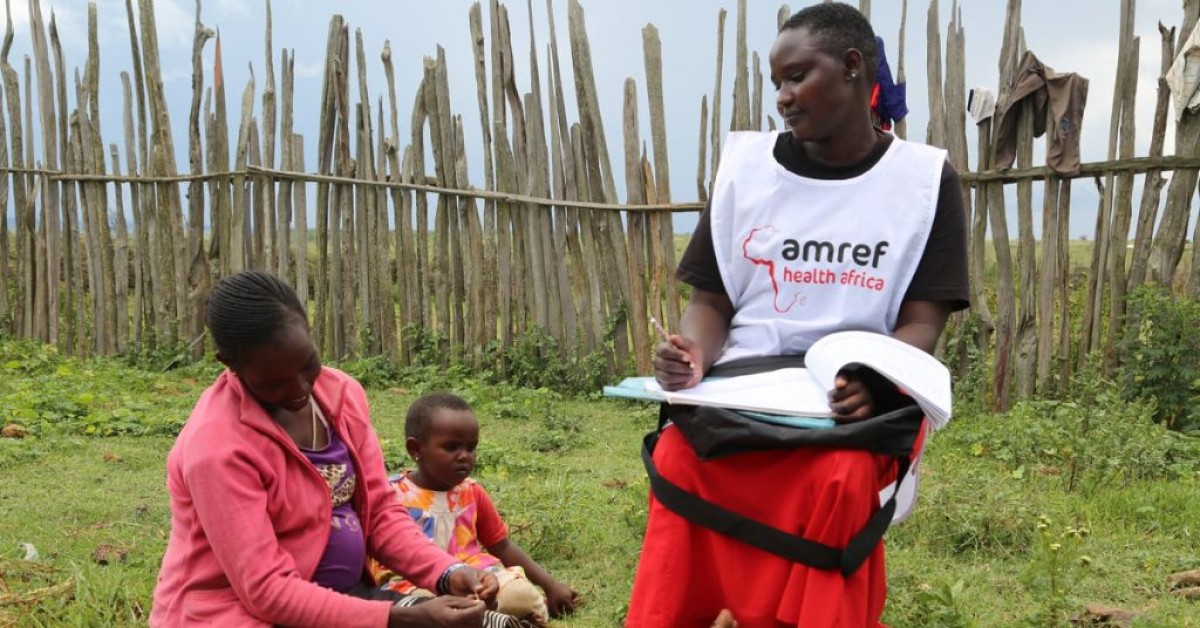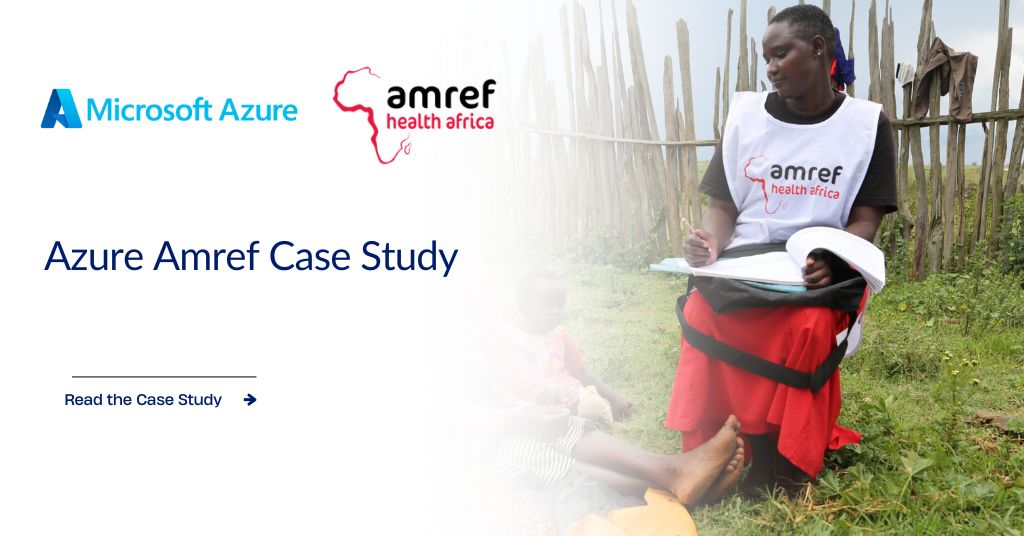The global health nonprofit Amref Health Africa works to create lasting change across Africa, including nutrition projects in Kenya. Amref wanted a way to address malnutrition more proactively to stop this widespread condition and save lives.
A multistakeholder effort is developing an AI-powered tool to predict malnutrition across Kenya using Azure AI. The solution will provide location-specific forecasts to inform the nonprofit, partnering organizations, and governmental bodies.
Amref anticipates that the tool will enable them to better understand current nutrition circumstances and predict future problems to plan and pre-position resources. Ultimately, they believe they will be able to act earlier to save more lives.
Every day, Martin Nyawami helps ensure children, babies, and pregnant mothers are well nourished and healthy. The Moyenyi Dispensary in Kinango, Kenya, where he works as a nursing officer, treats children for malnutrition, especially during drought and flood seasons. The happiest part of his day is when children “graduate” from his care, their bodies better able to ward of illness and pay attention in school through better nutrition. “With the right resources, we can prevent even one more person in our community dying from malnutrition,” Nyawami says.
He is excited because Amref Health Africa, the global health nonprofit that supports his work and other nutrition programs across Kenya, has been developing a tool to do just that. In partnership with the Kenyan Ministry of Health, the University of Southern California (USC), and the Microsoft AI for Good Lab, Amref aims to create an AI-powered tool to predict malnutrition across the country. With these forecasts, Amref and its partners will be better able to plan interventions, mobilize resources, and prevent malnutrition.
Amref hopes the tool will be a game-changer in Kenya’s agenda of ending malnutrition country-wide by 2027. Currently, 18 percent of children in Kenya under five—more than 2 million—are stunted, an impaired growth condition that comes from chronic malnutrition. “Technology is an important aid in tackling malnutrition,” says Dr. Shiphrah Kuria, Amref Regional Manager for Reproductive, Maternal, and Child Health. “Using AI to forecast next malnutrition hotspots in Kenya has the potential to save lives.”
Predicting malnutrition hotspots
The Kenyan Ministry of Health has been collecting detailed data from healthcare providers for the last decade, building out the Kenya Health Information System as a comprehensive resource for the country’s health sector. Transforming such a vast wealth of data into actionable insights has been a challenge, though. “Given the massive amount of data, it is almost impossible to ingest it manually,” says Dr. Girmaw Abebe Tadesse, Principal Research Scientist and Manager at the Microsoft AI for Good Lab. The AI-based malnutrition forecasting model utilizes this treasure trove of anonymized health information collected through the District Health Information System (DHIS2)—plus other publicly available and complementary data such as satellite imagery—to understand current nutrition status as well as anticipate future problems, at scale. The model was developed using Microsoft Azure, which was granted to Amref for this project and is utilized for securely storing data and training AI models.
“AI will assist our mission to transform the health of communities through primary healthcare,” says Herbert Basra, Amref Monitoring and Evaluation Lead. “Modeling can predict what is likely to happen, with accuracy we can rely on, in the shortest time.”
The Microsoft AI for Good Lab and USC built the model that was trained on a diverse set of data, then tested and refined based on how it predicted past malnutrition events. The model predicts the severity and scope of future malnutrition risks using the standard Integrated Food Security Phase Classification Acute Malnutrition (IPC-AMN) scale at a sub-county level. This specificity is crucial to anticipate malnutrition in Kenya’s diverse communities across grasslands, forests, deserts, and urban environments. It also predicts risk at one-, three-, and six-month intervals, which reflects anticipated seasonal influences such as flood and drought. “It gives us an alert and warning in advance,” Kuria says.
Nyawami will be able to use the AI-powered malnutrition forecasting model to help improve health in Kinango. He says, “AI can help me predict the future, plan, and get the right resources to save lives.”
Working to prevent malnutrition
Malnutrition can slow or stop typical growth and development, compromise the immune system, interfere with play and learning, and even lead to death. “We are especially concerned about malnutrition in children under five years old because it affects their quality of life currently and in the future,” Kuria says. “It is much better to prevent malnutrition than to treat it.”
“That’s where the malnutrition forecasting model comes in to give decision makers insights early,” Tadesse says. The University of Southern California is working with Amref and the rest of the coalition to incorporate the model into an easy-to-use tool that transforms data and patterns into actionable insights. AI-based predictions will empower Amref, the Ministry of Health, and other organizations to proactively step in sooner and even prevent malnutrition from occurring.
Armed with data-backed forecasting, Amref and its partners will reallocate resources where they are needed now and in the future. Strategic deployment of staff and supplies, such as dietary supplements and emergency assistance, can halt hunger before it sets in. Integrating satellite-driven information, such data that signal the agricultural activity on the ground, into the model also empowers Amref to pre-position supplies ahead of anticipated obstacles and to scale the forecasting into regions where the clinical health data might not be available.
Amref used to analyze health data twice a year. They will run these numbers monthly, thanks to the malnutrition forecasting model. “By using AI, we will always be ready to act,” says Samuel Mburu, Head of Digital Transformation at Amref.
The nonprofit will be able to share predictions and access to the tool with its partners. This enables other community health organizations to plan and intervene in the locations where Amref does not work. They hope the proactive collaboration will stop people impacted by hunger “so no one is left behind,” Kuria says.
“When you know where the trouble is likely to come, you don’t wait for it,” she adds. “This technology puts us ahead because with better planning and better prevention, we are getting closer to our goals of ending malnutrition.”
Evaluating and designing better programs
Amref continually strives to improve its programs to better support healthcare providers and the people they serve. “Microsoft AI has brought precision to easily and more effectively evaluate our programs,” Barasa says.
The nonprofit plans to use the tool to quantify its impact. The model’s predictions show expected levels of malnutrition without Amref intervention; comparing those numbers to on-the-ground results will demonstrate the difference the nonprofit made.
The model will also enable Amref to contrast locations running different interventions. This tactic reveals the most effective hunger-fighting strategies so the nonprofit team can implement them more widely. By continually improving programs and adjusting to dynamic conditions due to climate change, Amref accelerates the pace of impact. That translates directly to more children and mothers living better, healthier lives.
With the success of the AI-based malnutrition forecasting tool, Amref and the Ministry of Health plan to replicate the framework to other health concerns. Amref also hopes to provide the solution to other countries. More than 80 other nations in the Global South collect clinical health data similar to what the tool uses, so “the solution could be calibrated to address different and future humanitarian crises,” Tadesse explains.
Technology is helping Amref move the dial on enormous health challenges, Basra says. “AI helps us predict cases of malnutrition and channel resources to where they are truly needed. The future looks more bright because we’re using technology to save children.”
Find out more about Amref on Twitter, Facebook, and LinkedIn
AI helps us predict cases of malnutrition and channel resources to where they are truly needed. The future looks more bright because we’re using technology to save children.
Herbert Basra: Monitoring and Evaluation Lead
Amref

